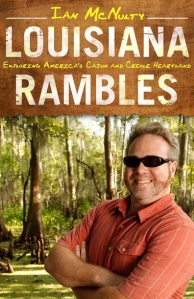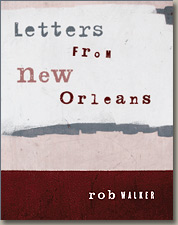All good things come to an end.
And in addition to that, this blog has come to an end. Or at least, it’s coming to a highly open-ended hiatus, starting the minute I post this.
There are two reasons for this.
- For quite some time now, I’ve just been too distracted by other projects to give this blog its due.
- For quite some time before that, what motivated me to keep this blog up to date was the squishy but fun idea that it was the world’s only single-song blog — or at least the world’s only “St. James Infirmary”-specific blog.
On the latter point, not only is this not the only the world’s only “St. James Infirmary”-specific blog — it’s not even the best such blog! (In other words, you can search this whole world over — and you’ll immediately find a better blogger than me!) The best one, and the one you should immediately redirect your attention to, is Robert W. Harwood’s I Went Down To St. James Infirmary. Mr. Harwood, author of the indispensable book I Went Down To St. James Infirmary, has long since surpassed me as the leading explorer of this uniquely wonderful tune, and the multiple historical byways that exploring its origins reveals. I’ll continue to follow him on his journey, and you should, too.
As for me: If you want to stay connected I’ll offer a few options below. But if you don’t, that’s cool, and I thank you for sticking with me over the years.
- These days, I collect links and images and thoughts related to the idea of place (New Orleans included) at lettersfromhere.tumblr.com.
- Similar material related to music, with something of a focus on how technology is or isn’t changing the way we listen, can be found at journal.robwalker.net. Anything else I have to say in the future about “St. James Infirmary,” I’ll say there.
- As some of you know, my day job boils down to writing about design/marketing/consumer culture/whatever. If you’re interested in that, please check out my blog on Design Observer; my MTKG Tumblr; and the Consumed Facebook page;
- I mentioned “other projects” above. Those would primarily be: Significant Objects, which involves fiction about thrift-store flotsam (book version forthcoming in April 2012); The Hypothetical Development Organization, which involves implausible futures for unpopular places; and Unconsumption, a group Tumblr with assorted spinoffs, dedicated to promoting creative reuse and mindful consumer behavior.
- Other, smaller side efforts include Things That Look Like Other Things, a Tumblr; and Google Image Search Results, also a Tumblr, though that project may have other iterations in the future.
- I am also still overseeing MLK BLVD, the open-source photojournalism effort dedicated to collecting images from streets, avenues, boulevards, etc., named after Martin Luther King Jr. Like this blog, that project spun out of Letters From New Orleans, a book you should buy and enjoy immediately if you haven’t already done so. To this very day, 100% of author royalties (and yes, they persist) are promptly redirected to worthy causes in New Orleans.
- Finally: The
Consumed/Rob Walker email newsletterRW Quarterly Report is perhaps the best way to stay in touch with whatever it is I am doing now, and will do in the future.
And obviously, if none of that is of any interest, then I wish you nothing but the fondest of farewells! Bye!



 A couple of years ago I did some research into the song "St. James Infirmary," wrote up what I found, emailed that essay to friends and posted it on my web site (as part of a series of "Letters From New Orleans," as I was living in that city at the time). Based on the feedback, I wrote a second version of the essay, and asked for more feedback. Based on that, I wrote a
A couple of years ago I did some research into the song "St. James Infirmary," wrote up what I found, emailed that essay to friends and posted it on my web site (as part of a series of "Letters From New Orleans," as I was living in that city at the time). Based on the feedback, I wrote a second version of the essay, and asked for more feedback. Based on that, I wrote a 
